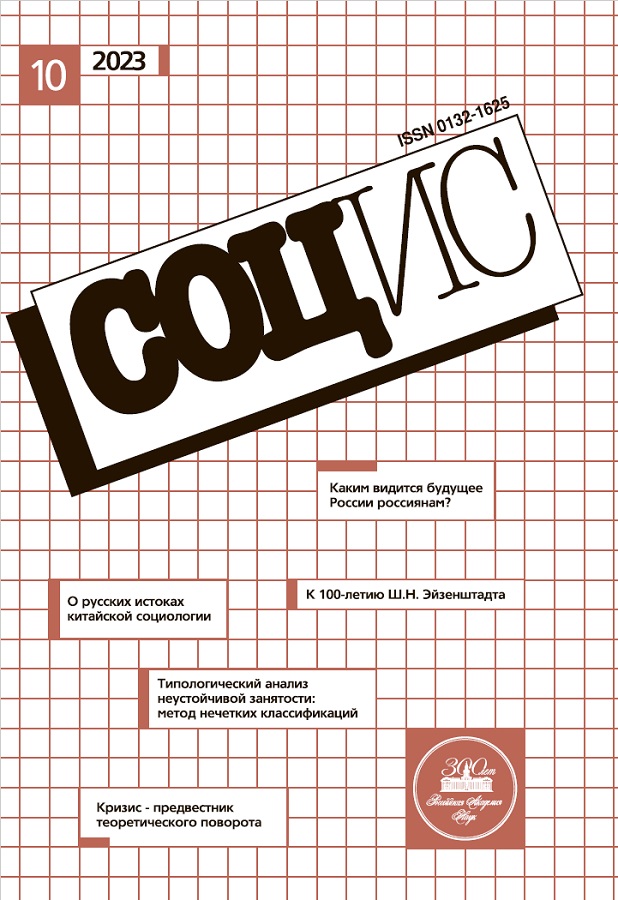Migration of the Population in the Border Region: Status and Trends (the Case of the Saratov Region)
- Authors: Loginova L.V.1, Shcheblanova V.V.1
-
Affiliations:
- Saratov State Law Academy
- Issue: No 10 (2023)
- Pages: 52-64
- Section: Articles
- URL: https://vietnamjournal.ru/0132-1625/article/view/661929
- DOI: https://doi.org/10.31857/S013216250028304-7
- ID: 661929
Cite item
Abstract
The relevance of the study is due to the destabilizing influence of modern migration processes on regional development, primarily the Russian borderlands with depopulation of the population. This is manifested in the growth of spatial heterogeneity, the deepening of territorial imbalances, the expansion of sparsely populated spaces that threaten the unity of the country in economic, political and social aspects. The purpose of the article is to assess the migration situation in a border region with a decreasing population on the example of the Saratov region, to identify the main trends and potential threats. The border situation is one of the potential factors stimulating migration. However, migration outflow is observed in the Saratov region. In the interregional migration turnover, the region acts as a donor, losing in competition to other regions for human capital. The human losses of the region due to interregional migration were partially compensated by the influx of international migrants accompanied by an increasing crime rate in the migration field and among migrants. The analysis made it possible to reveal a tendency to increase the negative impact of migration processes on the development of the Saratov region expressed in reducing human capital, increasing burden on labor resources, expanding of sparsely populated border areas, and growing illegal migration. This requires taking a set of measures to retain and attract human capital in the border municipalities of the region, optimizing migration flows and migration regime.
About the authors
Larisa V. Loginova
Saratov State Law Academy
ORCID iD: 0000-0003-2675-2801
Russian Federation, Saratov
Veronika Vyacheslavovna Shcheblanova
Saratov State Law AcademyRussian Federation, Saratov
References
- Бийжанова Э.К. Социальная политика региональной власти: развитие социокультурного потенциала приграничья // Ученые записки КФУ им. В. И. Вернадского. Социология. Педагогика. Психология. 2018. Т. 4 (70). № 4. C. 3–9.
- Дорошенко С.В. Компаративный анализ малого предпринимательства в приграничных регионах России и Казахстана // Экономика региона. 2020. Т. 16. Вып. 3. С. 712–724. doi: 10.17059/ekon.reg.2020-3-3.
- Карпенко М.С., Колосов В.А., Себенцов А. Б. Трансформация российско-казахстанского пограничья в постсоветский период: институциональное и экономическое измерения // Проблемы национальной стратегии. 2021. № 5(68). С. 25–40. doi: 10.52311/2079-3359_2021_5_25.
- Карцева М.А., Мкртчян Н.В., Флоринская Ю.Ф. Миграция в России и социально-экономическое развитие регионов: анализ взаимного влияния // Проблемы прогнозирования. 2020. № 4. С. 87–97.
- Колосов В.А., Вендина О.И., Зотова М.В. и др. Российское пограничье: вызовы соседства / Под ред. В.А. Колосова. М.: ИП Матушкина И.И., 2018.
- Красинец Е.С. Международная трудовая миграция в развитии современной России // Народонаселение. 2022. Т. 25. № 2. С. 104–115. doi: 10.19181/population.2022.25.2.9.
- Логинова Л.В. Миграция сельского населения в современных условиях: состояние, особенности и последствия // Аграрная наука и образование: проблемы и перспективы. Саратов: ЦАИ СГАУ, 2022. С. 239–245.
- Олейник С.А. Особенности государственной политики интеграции иммигрантов в приграничных регионах // Власть. 2021. Т. 29. № 3. С. 71–76. doi: 10.31171/vlast.v29i3.8142.
- Пипия Л.К., Чистякова В.Е. Проблема «утечки умов» на фоне миграционных процессов в России // Инновации. 2020. № 8 (262). С. 18–19. doi: 10.26310/2071-3010.2020.262.8.003.
- Попкова Л.И. Теория и практика приграничных исследований // Геополитика и экогеодинамика регионов. 2019. Т. 5 (15). Вып. 1. C. 243–249.
- Реутов Е.В. Отток населения как угроза российской провинции // Большая Евразия: Развитие, безопасность, сотрудничество. 2020. № 3-1. С. 809–812.
- Рычихина Н.С. Современные тенденции женской международной трудовой миграции // Женщина в российском обществе. 2020. №. 1. С. 45–54. doi: 10.21064/WinRS.2020.1.4.
- Рязанцев С.В., Вазиров З.К., Гарибова Ф.М. «Зависшие на границах» между Россией и Родиной: мигранты из стран Центральной Азии во время пандемии СOVID-19 // Научное обозрение. Сер. 1. Экономика и право. 2020. № 3. С. 45–58. doi: 10.26653/2076-4650-2020-3-04.
- Рязанцев С.В., Ростовская Т.К., Перемышлин С.Н. Гендерные аспекты трудовой миграции в России: тренды, последствия, регулирование // Женщина в российском обществе. 2019. № 4. С. 53–65. doi: 10.21064/WinRS.2019.4.5.
- Сивоплясова С.Ю. Региональные различия женской эмиграции из приграничных территорий России // Региональные проблемы. 2017. Т. 20. № 3. С. 58–62.
- Яськова Т.И. Межстоличное положение как вызов социально-экономическому развитию российско-белорусского приграничья // Региональные исследования. 2021. № 2. С. 74–85. doi: 10.5922/1994-5280-2021-2-7. doi: 10.5922/1994-5280-2021-2-7.
- Chudinovskikh O., Kharaeva O. Migration policy towards skilled labor in the Russian Federation // BRICS Journal of Economics, 2020. No. 1(2). С. 80–102. doi: 10.38050/2712-7508-2020-11.
Supplementary files










